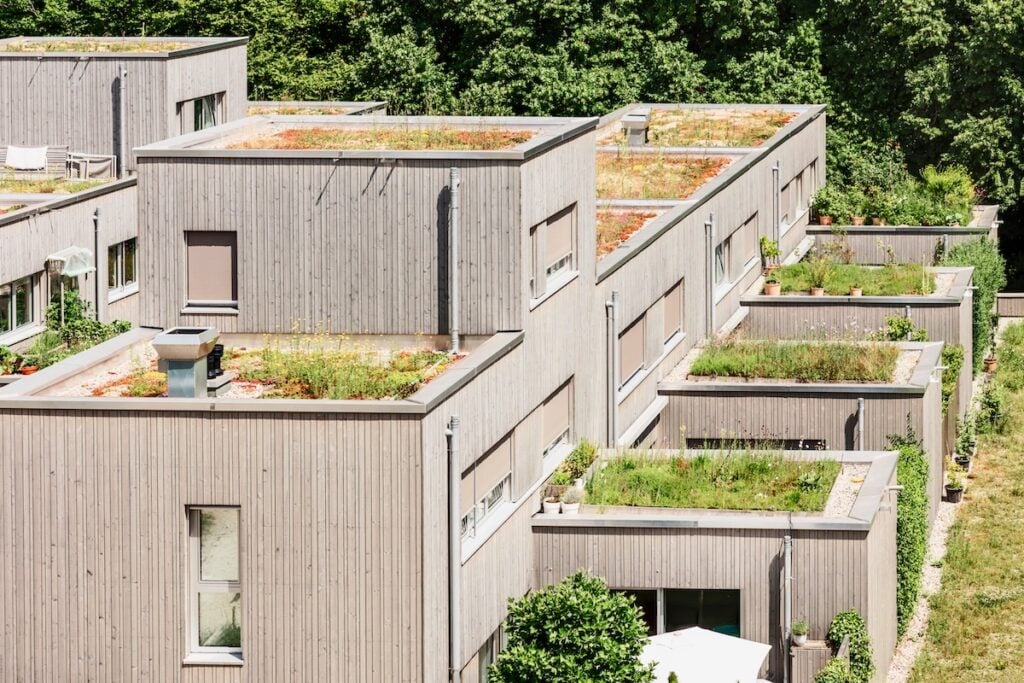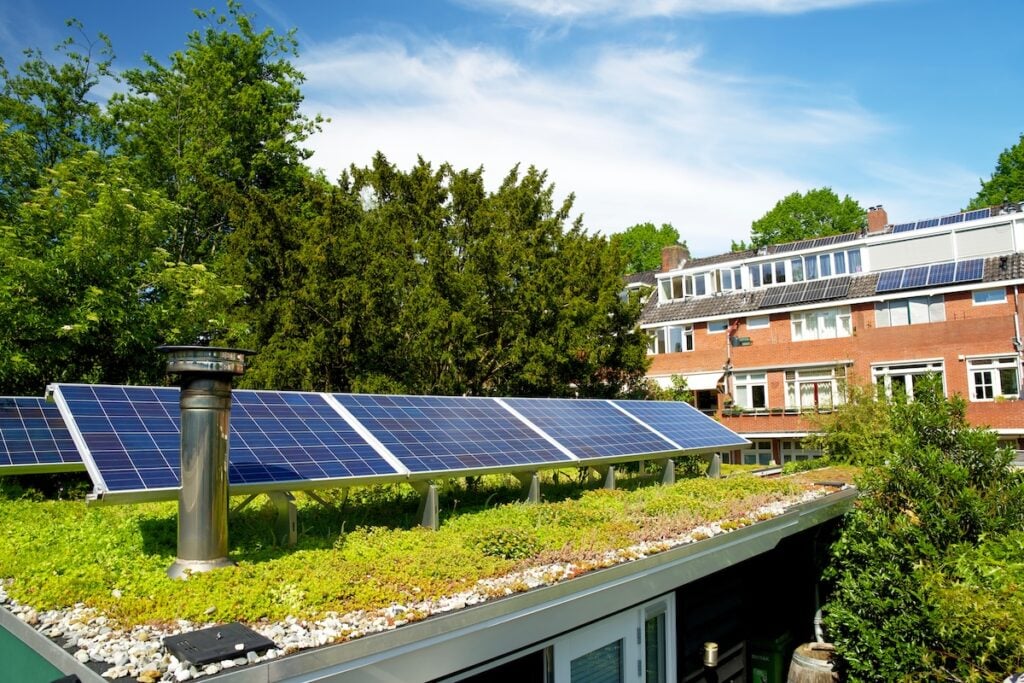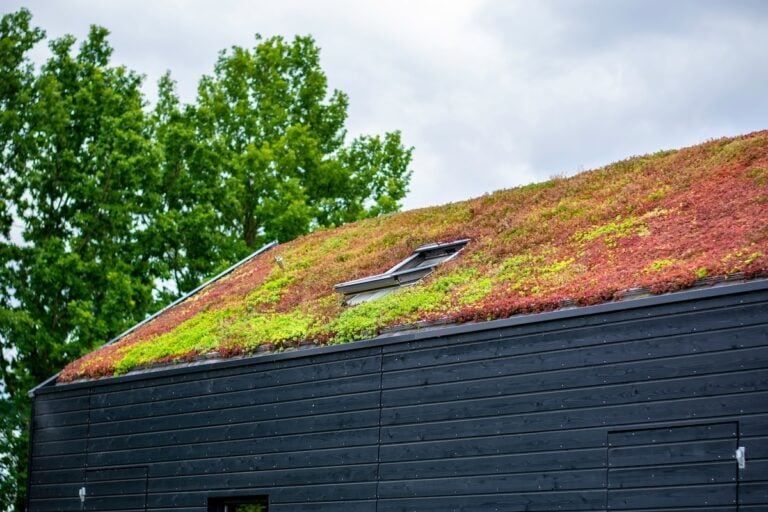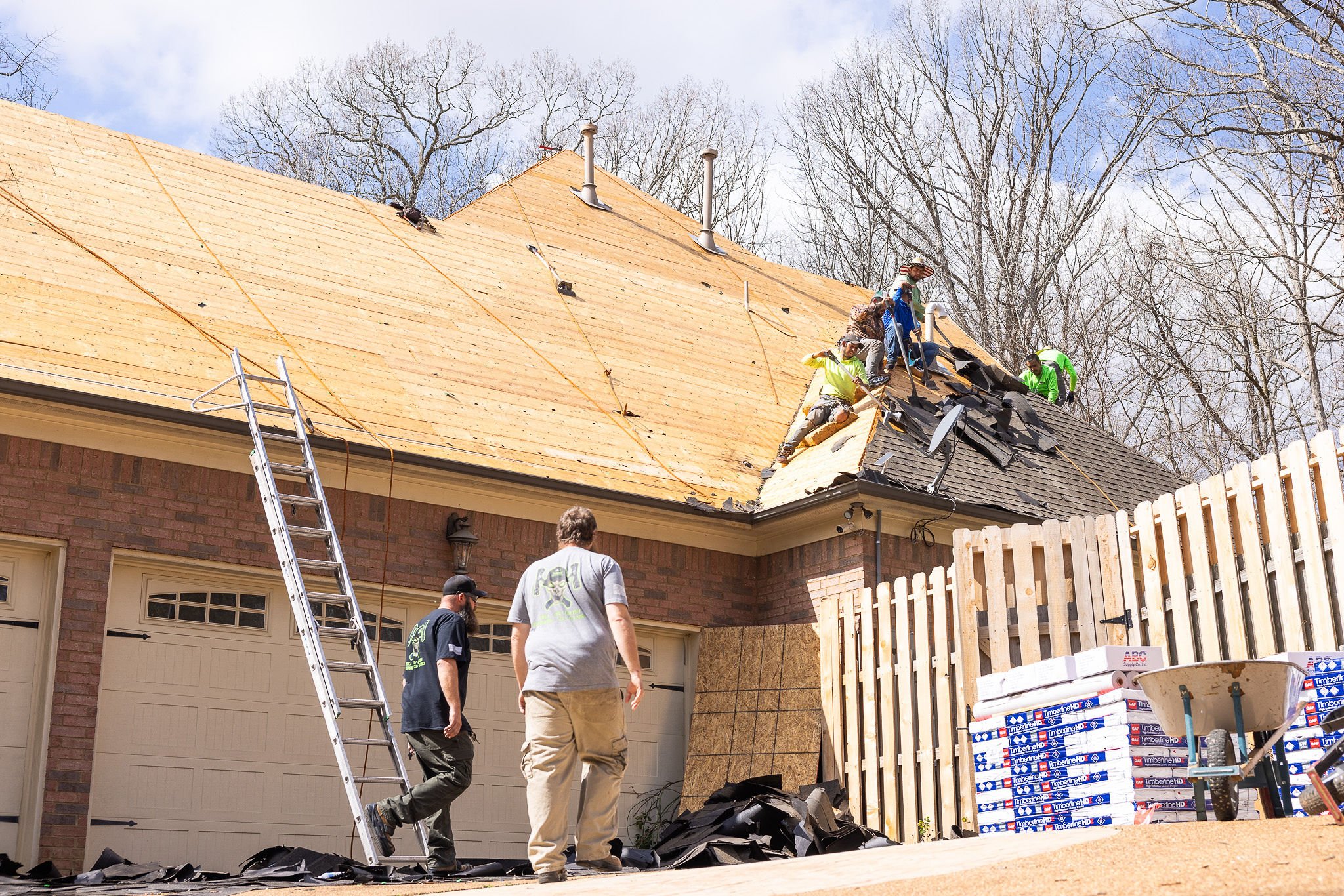Are you looking for a roofing solution that benefits both your home and the environment? Green roofs represent one of the most innovative and sustainable approaches to modern roofing, combining environmental responsibility with practical home benefits. These living roof systems have gained popularity among homeowners who want to reduce their carbon footprint while enjoying long-term savings on energy costs.
If you’re considering eco-friendly roofing options, our sustainable roofing services can help you explore whether a green roof system is right for your home. We specialize in helping homeowners make informed decisions about environmentally conscious roofing solutions.
This comprehensive guide will cover:
- What green roofs are and how they work
- Key benefits for your home and the environment
- Step-by-step process for installing a green roof
- Important considerations before making the switch
- Maintenance requirements to ensure long-term success
🌱 Why Green Roof Systems Matter for Modern Homes

Green roofs aren’t just an environmental trend—they’re a practical solution that addresses several challenges facing today’s homeowners. These living roof systems provide tangible benefits that can improve your quality of life while contributing to a healthier planet.
The importance of green roofs extends beyond individual homes to entire communities. As urban areas continue to expand, traditional roofing materials contribute to the heat island effect, where cities become significantly warmer than surrounding areas. Green roofs help counteract this problem while providing direct benefits to homeowners.
Here are the key benefits of installing a green roof:
- Energy efficiency: Natural insulation reduces heating and cooling costs by up to 30%
- Stormwater management: Absorbs rainwater, reducing runoff and flooding risks
- Air quality improvement: Plants filter pollutants and produce oxygen
- Extended roof lifespan: Protective vegetation layer shields underlying materials from weather damage
- Increased property value: Eco-friendly features appeal to environmentally conscious buyers
- Noise reduction: Living materials provide excellent sound insulation
🏗️ 7 Steps to Install Green Roofs

Installing a green roof requires careful planning and professional expertise. The process involves multiple stages, each crucial for creating a successful living roof system that will thrive for decades.
1. Structural Assessment and Reinforcement
Before embarking on any green roof installation, a comprehensive structural evaluation of your existing roof is paramount. This initial step is non-negotiable to ensure the safety and long-term viability of the green roof system.
- Professional engineers must verify: It’s crucial to engage qualified structural engineers to meticulously assess your roof’s load-bearing capacity. They will determine if your roof can adequately support the significant additional weight imposed by a green roof, which typically ranges from 15 to 150 pounds per square foot, depending on the type and depth of the green roof system. This assessment considers the weight of the growing medium, vegetation, water saturation, and any ancillary components.
- Structural reinforcement may be necessary: If the initial assessment reveals that your roof cannot support the proposed green roof’s weight, structural reinforcement will be required. This could involve adding beams, columns, or other supporting elements to strengthen the roof’s integrity. Investing in proper reinforcement is critical to prevent structural damage, ensure safety, and guarantee the longevity of both the building and the green roof.
2. Waterproof Membrane Installation
The waterproof barrier is arguably the most critical component of any green roof system, serving as the primary line of defense against water infiltration into the building structure. Its flawless installation is vital for preventing costly damage and ensuring the roof’s integrity.
- High-quality EPDM or TPO membranes: These materials are renowned for their exceptional waterproofing capabilities, durability, and resistance to environmental factors. EPDM (ethylene propylene diene monomer) is a synthetic rubber roofing membrane widely used for its flexibility and longevity, while TPO (thermoplastic polyolefin) is a single-ply roofing membrane known for its heat-welded seams and reflective properties. Choosing the right material depends on specific project requirements and climatic conditions.
- Multiple layers ensure complete waterproofing: Best practices often involve installing multiple layers of waterproofing membrane to create a robust and redundant barrier. This layered approach significantly reduces the risk of leaks, even if one layer is compromised. Careful attention to seams, penetrations, and flashing details during installation is essential to achieve a truly watertight system.
3. Root Barrier Application
Protecting your roof from the invasive potential of plant roots is absolutely essential for the long-term success and integrity of your green roof system. Without an effective root barrier, vegetation can cause significant structural damage.
- Specialized root-resistant membranes: These membranes are specifically designed to prevent plant roots from penetrating the underlying waterproofing layers and the building structure. They are often made from strong, impermeable materials that roots cannot grow through or around.
- Chemical and physical root barriers: A comprehensive approach often involves both physical barriers (the specialized membranes) and, in some cases, chemical treatments that deter root growth. These work in tandem to create a formidable defense, ensuring that the vegetation remains within its designated growing medium and does not compromise the building’s structural components.
4. Drainage System Setup
Proper drainage is fundamental to the health of the green roof plants and the longevity of the roof structure itself. An effective drainage system prevents waterlogging, which can harm plants and put undue stress on the roof.
- Strategic placement of drains and outlets: Water must be efficiently guided off the roof. This involves careful planning of drain locations, ensuring they are strategically placed to capture and channel excess water away from all areas of the green roof. Proper outlets are needed to direct this water into the building’s drainage system.
- Gravel or specialized drainage boards: These components facilitate the rapid removal of excess water from the growing medium. Gravel layers provide a permeable base, while engineered drainage boards, often made from recycled plastics, create voids that allow water to flow freely to the drains. They also act as a protective layer for the waterproofing membrane.
5. Growing Medium Installation
The growing medium, often referred to as “substrate” or “soil,” is a specially engineered blend that supports plant life while minimizing the structural load on the roof. It’s not typical garden soil.
- Lightweight growing mediums: These are crucial for reducing the overall weight of the green roof. They are typically composed of lightweight aggregates (like expanded clay, shale, or slate), pumice, and organic matter, designed to retain water and nutrients while remaining porous.
- Soil depth varies depending on vegetation: The depth of the growing medium directly correlates with the type of plants intended for the green roof. Extensive green roofs, which are lighter and require less maintenance, typically use a shallower medium (2-6 inches) for sedums and drought-tolerant plants. Intensive green roofs, designed for a wider variety of plants, shrubs, and even trees, require a much deeper medium (6 inches to several feet).
6. Plant Selection and Installation
Choosing the appropriate plant species is vital for the long-term success and aesthetic appeal of your green roof. Plants must be able to thrive in the specific microclimate and conditions present on the roof.
- Native and drought-resistant plants: Selecting plants native to your region or those highly resistant to drought significantly reduces the need for irrigation and ongoing maintenance. They are naturally adapted to the local climate, making them more resilient.
- Sedum varieties are popular choices: Sedum, a genus of succulent plants, is particularly favored for extensive green roofs due to its hardiness, ability to tolerate extreme temperatures and drought, and low maintenance requirements. They provide excellent ground cover and come in a variety of colors and textures. Other suitable plants include certain grasses, herbs, and wildflowers.
7. Irrigation and Maintenance Systems
Even with drought-tolerant plants, an irrigation system is often necessary, especially during establishment or prolonged dry periods, to ensure the green roof remains healthy and vibrant. Regular maintenance is also key.
- Drip irrigation systems: These are highly efficient, delivering water directly to the plant roots with minimal waste due to evaporation or runoff. They are ideal for green roofs as they provide precise watering, conserving water resources.
- Regular maintenance schedules: A green roof, like any garden, requires ongoing care. This includes periodic weeding to prevent invasive species, checking the health of the plants, inspecting the drainage system for blockages, replenishing growing medium if needed, and ensuring the irrigation system is functioning correctly. A well-maintained green roof will perform optimally and last for decades.
⚡ Essential Considerations Before Using Green Roof Technology

While green roofs offer numerous benefits, several important factors require careful consideration before installation. Understanding these considerations helps ensure your green roof project succeeds and provides the expected benefits for years to come.
Climate and Weather Conditions
Your local climate plays a crucial role in green roof success. Some regions naturally support green roof systems better than others, and understanding your area’s specific challenges helps you make informed decisions.
- Temperature Considerations: Extreme temperature fluctuations can stress both plants and roofing materials. Your green roof design must account for your area’s temperature ranges.
- Precipitation Patterns: Areas with irregular rainfall may require more sophisticated irrigation systems, while regions with heavy rainfall need enhanced drainage capabilities.
- Wind Exposure: High-wind areas may require windbreaks or specialized plant selections that can withstand strong gusts.
Building Codes and Regulations
Local building codes often have specific requirements for green roof installations. Research these requirements early in your planning process to avoid costly surprises.
- Permits and Inspections: Most municipalities require permits for green roof installations, along with inspections at various stages of construction.
- Weight Restrictions: Building codes typically specify maximum weight loads for roofing systems, which directly impacts your green roof design options.
- Fire Safety Requirements: Some areas have specific fire safety regulations that affect plant selection and maintenance requirements.
Budget and Long-term Costs
Green roofs require higher upfront investment than traditional roofing, but they often provide long-term savings through reduced energy costs and extended roof life.
- Installation Costs: Professional green roof installation typically costs more than conventional roofing due to specialized materials and expertise required.
- Maintenance Expenses: Regular maintenance includes plant care, irrigation system upkeep, and periodic inspections to ensure system integrity.
- Potential Savings: Energy cost reductions and increased property value can offset initial investment costs over time.
🚀 Transform Your Home with Sustainable Roofing
Green roofs represent a forward-thinking approach to home improvement that benefits both homeowners and the environment. These innovative systems provide energy savings, environmental benefits, and increased property value while contributing to healthier communities.
The installation process requires professional expertise and careful planning, but the long-term benefits make green roofs an excellent investment for environmentally conscious homeowners. From reduced energy costs to improved air quality, green roofs offer tangible advantages that traditional roofing simply cannot match.
Ready to explore eco-friendly roofing options for your home? Our experienced team can help you determine whether a green roof system is right for your specific situation. Contact us today to schedule a consultation and learn more about transforming your roof into a sustainable, living system that works for your home and the planet.


